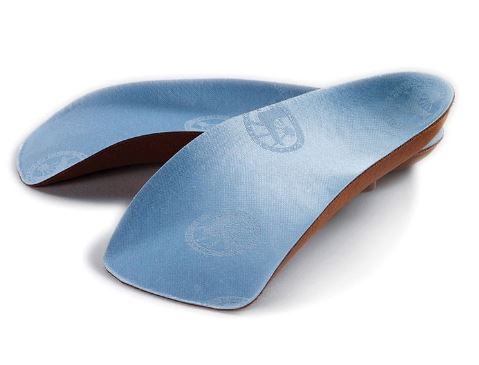Orthotics Can Save Your Day
Some say orthotics, others call them inserts or insoles, footbeds, or even orthoses; whatever they’re called, orthotics are added inside a footwear’s existing structure to support the foot’s natural shape. Do you need them? Should they be added to your running shoes? How do you size an orthotic? These are the kinds of questions we’re addressing in this post.
The first step towards improving foot posture and alignment is consistent wear. As the base of the entire skeleton, it’s fundamentally important for our feet to be as supported as possible, allowing weight and pressure to be evenly distributed across all of our arches, toes, heel, and metatarsal pad, or ball of the foot. Constricting footwear like heels or too tightly laced athletic shoes can lead to unattractive, painful foot ailments that may deform the foot into an unnatural position.
The second step is pinpointing the specific region of your lower body that is causing discomfort or pain, either in the soles of the foot, ankle, knee, hips, and even in the lower back. Generally, many ailments in these parts of the body can stem from two types of motion in the foot: overpronation and supination.
Overpronation is characterized by the foot rolling inward. This abnormal movement is referred to as a lever. Pains and aches due to overpronation include bunions, arch pain, pain in the Achilles tendon, plantar fasciitis, and shin splints on the inside of the leg.
Supination is characterized by the ankle rolling or collapsing outwards. Ailments associated with supination include black toes, metatarsalgia or pain in the ball of the foot, pain at the top of the foot, and shin splints on the outside of the leg.
The third step is identifying the cause of the condition. While soft, natural surfaces like sand support a healthy, neutral foot alignment, hard, flat, man-made surfaces are unsupportive, and can lead to fallen arches, overpronation, or supination over time. Likewise, flat, unsupportive footwear can lead to unhealthy motion in the foot and can cause the foot to over-elongate by up to three sizes as we age.
When sizing for proper fitting closed-toed shoes, a thumb’s width should be present between the toes and the end of the sneaker. Additionally, the top of the foot should allow a pinch’s worth of extra fabric so the foot can flex with each step without constriction.
The fourth step is addressing the condition from the ground up. Neutrality here is essential; an orthotic placed inside an already well designed shoe allows a proportional response to pressure, all-day support, and cushioning against impacts. Orthotics are designed for a wide variety of needs and vary by brand. For the purposes of this article, we’ll be focusing on Aetrex (Lynco) and Birkenstock orthotics. After 31 years in the healthy footwear business, we highly recommend these two brands and we sell thousands of both every year.
The Aetrex Lynco 400 provides optimal foam cushioning and shock absorption, helping to stabilize the body thanks to a Pro-Shox® center layer and an AeroCell™ polyurethane core for support and shape retention. The Aetrex Lynco 405, however, takes this original model and adds a metatarsal support for those who experience pain in the ball of the foot.
Likewise, the Aetrex Lynco 2200 offers incredible slow-recovery memory foam cushioning that creates a custom fit to the natural shape of your foot, while the Aetrex Lynco 2205 takes this same makeup and adds the supportive metatarsal pad. These metatarsal pads are fundamental to treating ailments like metatarsalgia, bunions, or Morton’s neuroma.
Birkenstock’s orthotic model is highly durable, with contoured heel and arch support for long lasting comfort. Birkenstock’s orthotics range from full-length, to casual, and even heeled support all of which are offered in regular, medium, and narrow foot widths.
The fifth step is replacing your orthotics regularly. With 6-8 hours of use per day, we recommend replacing your insert every six months to a year. When replacing, be sure to receive a new measurement to ensure your foot has not changed over time.
Whether you run long distances, stand on your feet at work, or sit at a desk all day orthotics are essential for maintaining a neutral foot alignment. As our foundation is supported and stable, so too will the rest of our bones and muscular systems be allowed to function properly without pain and discomfort. What may seem novel actually becomes mantra here at Happy Feet Plus; your health starts from the ground up.
















